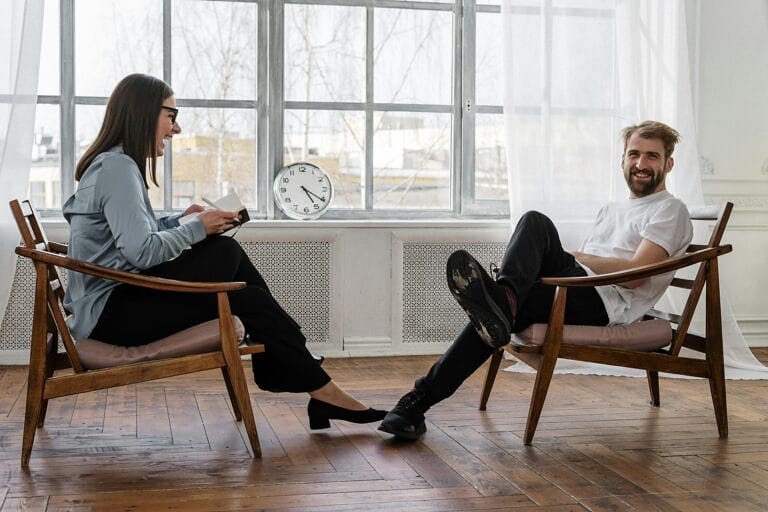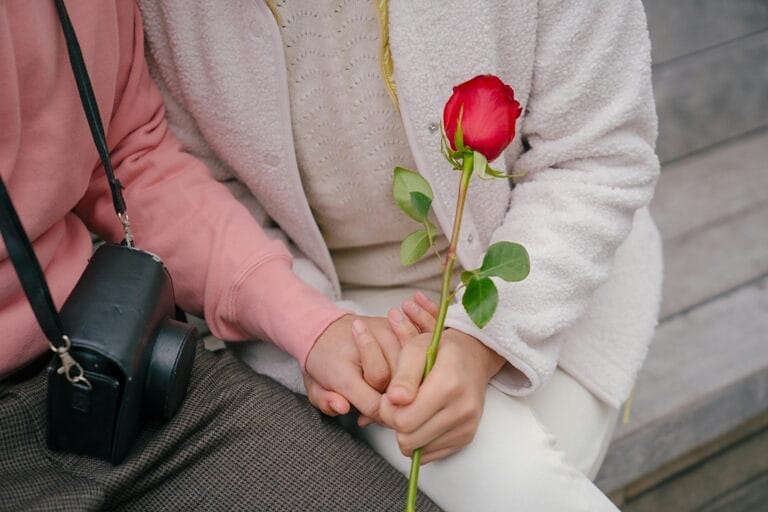
How Attachment Styles Help or Hurt Your Dating Life
One of the most talked-about topics in modern dating culture is the concept of attachment styles. Popularized by attachment styles books like Attached and viral conversations on social media, this framework helps explain behaviors in relationships—both your own and those of the people you date. This article delves into how attachment styles, as outlined in an attachment styles book, influence your dating life from your personal perspective and the perspective of your partner.
Introduction to Attachment Styles
I will take this from the perspective of both you personally as well as from her perspective. Recently, one of the highly talked-about dating trends in the culture is the discussion of attachment styles. I have recently been reading the book Attached, and it touches on this extensively. There are three main types, with a fourth that is a combination of two of the original three. They are anxious, secure, avoidant, and anxious-avoidant attachment styles. The theory and literature on this point to about half of people being secure and about twenty-five percent being anxious or avoidant. Now, the main one I would like to discuss is what I seem to have been encountering in the culture where I have been dating recently, and this is the avoidant.
Observations of Avoidant Attachment in Dating
For a long time, I have been curious about the behavior of women I have met, dated, or hooked up with, and why none of their behaviors seem to add up. Recently, after reading part of this book, some of it is beginning to make sense. The avoidant attachment type tends to desire closeness but often pushes it away when it is available to her. I have noticed this a lot with people I have talked to, gone out with, even dated, etc. And yes, the only common denominator in all of these interactions is me, and I will touch on this later. That being said, I do think some of this stems from childhood attachment to caregivers, as the book and the scientific literature on this topic discuss, but I do not think this is the whole story.
External Influences on Attachment Styles
I think the other piece of it is books like The Rules and Why Men Love/Marry Bitches, in addition to social media platforms like TikTok, which can warp anyone’s perception of reality if they spend too much time online and not enough time in real life. It seems that, in my anecdotal experiences in modern dating culture, women are often trained to use the tactics of an avoidant to keep the guy interested. Even the strong, independent woman, “boss babe” mentality seems to feed this further. Now, many of these women may actually be avoidant and not just using the tactics, but the explicit teaching of the previous things I mentioned, combined with the advice of their girlfriends (as discussed in my previous posts), makes it seem like the avoidant attachment style is more common today than ever.
Reflecting on Myself and Attachment Styles
Now the other piece of the puzzle is, of course, myself. I will say based on the quizzes to diagnose your attachment style that you can find many places online, I seem to come out as secure, which seems normal to me. But there are times where I also display characteristics of both the anxious and avoidant styles as well as sometimes even the anxious-avoidant. For me, this tends to be more on the back end when it comes to commitment and relationships, but I think this is more common among men than women. I think women can be avoidant on the front end when it comes to those first few dates and beginning to consistently spend time with a man. On the back end, when this portion of the courtship process is nearing its end and it is nearing time for commitment, men might be more avoidant in wanting to commit.
Anxious Attachment in Women
The anxious is typically characterized by most men when they tell the story of the “crazy girl.” What often seems to be common in these scenarios is someone who is worried when someone does not call and they do not hear from them or they wait longer than normal to respond, etc. People who tend to be more anxious do often have better-honed senses and the ability to read small cues than someone who is not anxious, but this can also go awry when they incorrectly overthink and over-read scenarios. This can result in women pushing men away because the man has difficulty helping her feel secure in order to calm this anxiety. This often results in a failed relationship and a guy telling the story of the crazy/needy girl.
Anxious Attachment in Men
For the male anxious attachment style, they may have shorter, faster-failing dating relationships because they will come across as very needy at the front of the dating process and can easily scare a woman off. In a relationship, if they are dating a woman with a secure attachment style who calms and soothes this anxiety, they can likely have a happy relationship. However, if they are dating another anxious individual or, even worse, an avoidant, things are likely to end badly.
Secure Attachment
The last type is secure. They tend to be the type of person who is a clear communicator and has the mentality of showing up as they are, asking for what they want clearly and concisely, and understanding that the other person can either give them that or not. No amount of worrying, anxiety, or avoidance on their part is likely to change the other person’s behavior because they are who they are. The secure individual can be with both the anxious and avoidant but will likely have an easier time with another secure partner.
Understanding and Applying Attachment Styles
In the above article on attachment styles, we covered all three main types—anxious, avoidant, and secure—with a quick mention of anxious-avoidant. We discussed how they may be interfering with my and your dating lives and why that may be the case. We also mentioned how this could explain some patterns of behavior that you have seen in some people that you have been dating. But the same can be said in terms of what you have seen from yourself. As easy as it is to point the finger at others, at the end of the day, it is a much more efficient means of carrying out your life to just know yourself better and always start there.
What Are Attachment Styles?
Attachment styles describe the way people connect with others emotionally, based on patterns often formed in childhood. There are three primary types, with a fourth being a combination of two:
- Anxious: Characterized by a strong desire for closeness but an intense fear of abandonment.
- Secure: The ideal, marked by comfort with intimacy, trust, and communication.
- Avoidant: Desires closeness but tends to push it away when it’s offered.
- Anxious-Avoidant: A mix of anxious and avoidant traits, often creating conflicting behaviors.
Studies suggest that roughly half of the population is secure, while about 25% exhibit either anxious or avoidant styles. But can attachment styles change over time? While they often stem from early-life experiences, research shows that attachment styles can evolve through self-awareness, personal growth, and healthy relationships. Understanding these categories is essential for making sense of your own dating behaviors, recognizing patterns, and exploring whether attachment styles can change for you or your partners.
Avoidant Attachment: A Growing Trend in Modern Dating
In my dating experiences, I’ve noticed avoidant attachment styles more frequently than the other types. Avoidants often desire connection but push it away when it becomes available. This pattern is not only confusing but also a key challenge in forming deeper relationships.
Cultural Influences on Avoidant Attachment
Why does avoidant behavior seem so prevalent today? Several cultural trends may be contributing factors:
- Popular Dating Advice: Books like The Rules and Why Men Love/Marry Bitches promote strategies that mirror avoidant behaviors, teaching individuals—particularly women—to remain elusive to keep potential partners interested.
- Social Media Distortions: Platforms like TikTok often glamorize independence and emotional detachment, warping perceptions of healthy relationships for those who spend more time online than engaging in real-life interactions.
- “Strong, Independent Woman” Narrative: While empowering, this mindset can unintentionally encourage behaviors that align with avoidant tendencies, further complicating the dating landscape.
These influences suggest that some people may naturally exhibit avoidant attachment styles, while others adopt them as a learned strategy in modern dating.
Self-Reflection: Understanding My Own Attachment Style
In exploring attachment styles, I’ve also taken the time to evaluate my own tendencies. Based on online quizzes and personal reflection, I identify as primarily secure, though I occasionally display traits of anxious and avoidant attachment styles.
- Anxious Traits: I notice these tendencies when I feel uncertain or overly focused on a lack of communication.
- Avoidant Traits: These emerge when it comes to commitment or emotional vulnerability, particularly later in the dating process.
Interestingly, this pattern aligns with what seems common among men, where avoidant traits appear more often as commitment nears, while women may exhibit avoidance during the initial stages of dating.
How Attachment Styles Shape Dating Experiences
Attachment styles influence interactions between partners and the overall dynamics of a relationship. Let’s break down how each style impacts dating, especially when considering scenarios like two anxious attachment styles dating:
Anxious Attachment
- Common Characteristics: Overthinking, seeking constant reassurance, and feeling distressed by delayed communication.
- In Women: This is often perceived as the “crazy girl” stereotype, where intense worry and overanalysis can push partners away.
- In Men: Anxious men may come across as overly needy early in the dating process, scaring off potential partners.
- Best Matches: A secure partner can help anxious individuals feel safe and grounded, fostering a healthier dynamic. However, when you have two anxious attachment styles dating, the relationship can become overly dependent, with both partners seeking constant validation, potentially leading to a cycle of heightened anxiety and miscommunication.
Avoidant Attachment
- Common Characteristics: Prefers emotional distance and often avoids commitment or vulnerability.
- Impact on Relationships: Avoidant individuals may frustrate partners by sending mixed signals—seeking closeness, only to withdraw when it’s offered.
- Cultural Factors: As mentioned earlier, avoidant behaviors may be exacerbated by societal influences, making this attachment style particularly challenging to navigate in modern dating.
Secure Attachment
- Common Characteristics: Comfortable with intimacy, clear communication, and a practical approach to relationships.
- Impact on Relationships: Secures tend to have the easiest time navigating relationships, as they can provide stability and balance for partners with anxious or avoidant traits. However, they often thrive best with another secure partner who matches their emotional availability.
Key Insights and Conclusions
In reflecting on attachment styles, it becomes clear how they influence not only your partner’s behavior but also your own. Modern dating culture—with its unique pressures and influences—can amplify certain attachment tendencies, especially avoidance. However, understanding these patterns can help you make sense of your dating experiences and improve your approach to relationships.
The key takeaway is self-awareness. While it’s tempting to focus on your partner’s behaviors, the most effective path to fulfilling relationships begins with knowing yourself. By recognizing and addressing your own attachment tendencies, you can approach dating with greater clarity, empathy, and success.
Final Thoughts:
Understanding attachment styles—anxious, avoidant, secure, and anxious-avoidant—provides valuable insights into how relationships function. Whether you’re dealing with avoidant partners, reflecting on your own tendencies, or learning to navigate the complexities of dating, the goal remains the same: self-awareness and a commitment to growth. Relationships begin and thrive when you start with yourself.



